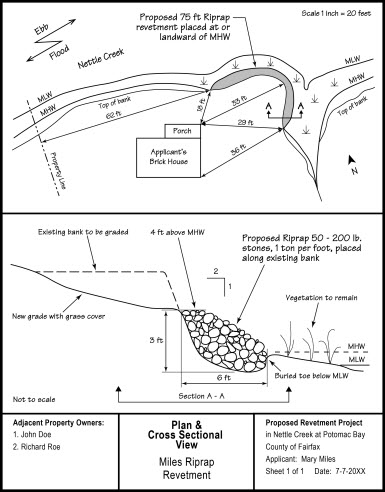The Wetlands Zoning Ordinance or the Coastal Primary Sand Dune Zoning Ordinance regulates use and development activity in tidal wetland areas in Fairfax County. Tidal wetlands are valuable natural resources which help to:
- prevent flooding
- improve water quality
- provide habitat
Consequently, the Wetlands Board requires mitigation or compensation for wetlands impacts. In addition, the Wetlands Board has adopted a Living Shoreline Policy, which encourages vegetated shoreline stabilizations.
Application Submission Requirements
For an overview of the permitting process and requirements, see the Application Guide.
The Wetlands Board’s application process has three requirements:


